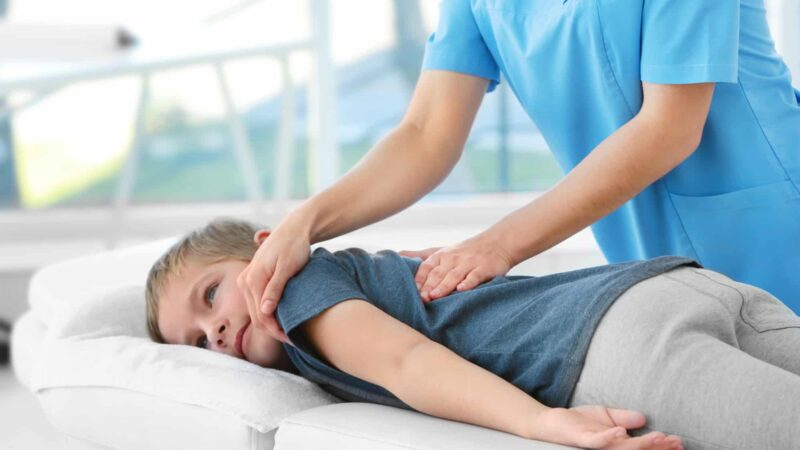If you’re a parent, keeping your kid safe, healthy, and content is at the top of your priority list. Child obesity is just one of many health and wellness problems that can be avoided or managed with the help of good nutrition and regular exercise. You can help your child become physically and mentally healthy by encouraging them to eat a well-rounded diet and participate in regular physical activity.
What do you do, though, if your kid would remain home and watch TV or play video games? In honor of September being Childhood Obesity Awareness Month, we’ve come up with some ideas to get your kid moving.
Showcase an Active Way of Life
Setting a good example with your actions is crucial if you want to shape how your children act. Every time you tell your kids to get moving, you risk an argument if they discover you’re not doing it yourself. Consequently, you should follow suit if you want your children to get up and move around. That is to say, it’s not enough to merely talk the talk. Here, talk is cheap; action is required.
Do your best to set a positive example by consistently engaging in vigorous physical activity. This can be done formally, in the form of a class like spin, yoga, boot camp, or jogging, if that’s what you like. However, that is not the only option. Take them with you while you stroll the neighborhood. Try out a new activity you enjoy and either sign up for a league for adults to play in or organize regular get-togethers with friends to play. It’s helpful to reframe exercise and other forms of physical activity as a positive experience rather than something to be avoided. Yes, it will be challenging, but try not to complain too much when it’s time to break a sweat.
Curb Your Screen Time
As television has become more commonplace, parents have found that their children increasingly prefer watching it indoors. And the emergence of portable electronic devices like notebooks, desktops, tablets, cellphones, and game consoles hasn’t helped matters. Getting enough sleep and limiting other unhealthy behaviors like excessive screen time is legal advice. Restricting your child’s screen time allows you to engage them in more active pursuits. They could be more willing to follow your advice if they knew they couldn’t go back to watching TV or using the computer if they didn’t mind it. When it comes to helping families develop a media strategy, the American Academy of Pediatrics is a great resource.
Get Some Active Toys for Them
To make exercise more appealing, it’s not enough to remove temptations like television and computers. If your child has access to things to play with outside, they will be more likely to be enthusiastic about being active. It may be true that you made do without many toys and amused yourself with whatever you found outside when you were a kid.
Crossing this item off the list need not cost an arm and a leg. Start with the basics, such as a ball or a jump rope. For kids, nothing beats getting outside and getting some exercise on a bicycle. If you’re on a tighter budget, you might want to see if you can find any deals at thrift stores, consignment shops, yard sales, or with friends with older children.
Another option is taking children to a community center where they may play with active toys. Playground equipment can be cheap at many community centers and gyms. You might also take them to the park and let them play in the jungle gym there.

Maintain a Secure Setting
Providing your child with a safe and secure space to play is crucial if you want to get them moving and active. Your kid needs a place to run about and play securely when not at school or in an organized activity. Make sure your kid feels comfortable and is safe wherever they play, whether in your fenced-in yard, a park, or a recreation center. As an added precaution against discomfort or damage, ensure they wear suitable clothing and shoes.
Set up Fun Family Activities
Don’t forget that setting a good example means joining in the fun yourself. That’s precisely why it’s relevant once again. Planning outings for the family is a fantastic way to encourage physical activity. More than that, it’s a great way to spend quality time with the family and strengthen bonds. Exercising together, whether on foot, bike, or on a hike, will show your youngster that they are not the only ones who are expected to adhere to this guideline.
If you don’t have time for elaborate weekend excursions, you may always take a stroll or ride your bike around the block after work. Going outside and playing a game like tag or practicing their favorite sport is better than staying inside.
Put Aside Time in Their Busy Schedules
There are numerous time commitments that kids must juggle. Finding time to devote to physical activity between school, homework, and other obligations might be challenging. Set aside sometime every day for them to engage in some little exercise. This may require preceding some activities (such as screen time, as indicated above), but even a reduction of five or ten minutes here and there can add up.
Find a Group Outing They’ll Enjoy
The importance of this suggestion cannot be overstated if you want your child to develop a lifelong habit of regular physical activity. Discover a move that will captivate and delight your kid. Also, make sure your kid can easily participate in the activity without getting bored or frustrated since they are too young. If they aren’t enjoying themselves, no amount of driving them to lessons and practices will prevent them from giving up at the first sign of boredom.
Finding what works best for your child may take a few tries. While some youngsters thrive on competition, others are content to enjoy the fun. While some young people do well in group settings, others work independently better. This doesn’t give you the green light to let your kid give up on whatever sport they attempt just because they say they don’t enjoy it. As the season progresses, they might start to care, and that’s a great chance to talk to them about sticking with something until the end. Please don’t make them participate in something they despise yearly, or they may grow to loathe team sports.
Do Your Best to Educate Them
To the extent that you can encourage your child to engage in regular physical activity, you should feel quite proud of yourself. On the other hand, they must understand why this is true. The advantages of exercise can be communicated to them in age-appropriate ways. If you want your child to take what you’re telling them seriously, you should back it up with more than just your authority.
It’s important to talk about the health benefits of exercise and a healthy diet, not about how you can change your appearance or how much weight you can lose. Discussing with your child’s pediatrician the best approach to helping them lose weight without making them feel bad is a good first step if you suspect this is the case. While focusing on physical measures to reduce childhood obesity is essential, we must not ignore the emotional toll this epidemic has on young people. So, continue stressing the importance of a healthy lifestyle and the incredible things their bodies can do if they take care of them.
Your child will receive the best treatment possible at Health Park Pediatrics. The goal is to assist them in making healthy lifestyle decisions and motivate them to maintain an active lifestyle. Call us at 919-896-7066 if you have any questions about our recommendations or are worried about childhood obesity. Appointment requests can also be made via the website.




